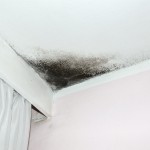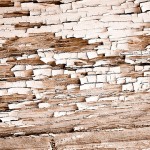 I’m a “dreader”. That’s not a word–I know that. But that doesn’t change the truth: I dread things. On a regular basis.
I’m a “dreader”. That’s not a word–I know that. But that doesn’t change the truth: I dread things. On a regular basis.
For example, I re-decorated my bathroom about a year ago. I put wood planking on the walls, hung some wallpaper, stained and varnished new trim, installed a new (bowed) shower rod and new curtain and finally, to finish the whole thing off, I installed a new shower head.
Which was the biggest mistake I made.
See, right after installing it, my wife marched right in, closed the door and proceeded to take a 45-minute shower. When she was done, the kids all marched through, one after the other.
When the shower marathon ended that day, I opened the bathroom door and it was as if a cloud had localized in that tiny room. I literally couldn’t see the other side through the steam. The little ceiling fan was working overtime, but there was no way it could keep up.
“Fortunately,” I thought, trying to wave away the steam, “this is something that won’t happen everyday. Once the ‘newness’ of the shower head wears off, we’ll go back to having to fight the kids to take baths.”
Nope. Not a chance. Every single day since the installation of that vile shower head, our bathroom is engulfed in steam. Shower after shower, hour after hour: steam, steam, steam.
Well, that went on for a long time and then the inevitable happened: the mold started growing around the edges of the ceiling. The wallpaper started peeling and curling up on all the seams. My beautiful bathroom had gone from a place of despair to a place of beauty and then back again to a place of despair all in about 6 months time. It was depressing to say the least.
And that’s where the “dreading” comes in. Everyday, I’d look at the ceiling and see the mold or the wallpaper and see the peeling and I’d dread the “fix-up” job that was to come.
I dreaded it because it seemed like such a big job: fixing the mold, fixing the paper, repainting the ceiling. I’d just gone through some of this work and now, thanks to that dumb shower head, I had an even bigger mess to fix.
And so I stared at it for a long time. I thought about it. I tried to ignore it. But most of all I dreaded it.
Until finally I got so sick of being depressed and frustrated about it that I actually fixed it.
I took a week and on a Monday night, I sprayed the mold with a bleach solution and scrubbed the ceiling. That took me exactly 17 minutes.
Two nights later I came back with more bleach–no scrubbing this time, just the bleach on the mold. That took about 7 minutes.
On Friday night I went around the room and primed all the previously moldy spots with ProFlo Alkyd primer and then I re-pasted all the peeling paper. That night’s work took about 15 minutes.
Finally on Saturday, I got ready to paint the ceiling and finish the job. I was ready for a big, painstaking job (I hate painting ceilings) but I was surprised to find that the whole thing took about an hour from the time I opened the can of paint to the time I put the paint back on the shelf in the workroom.
In the end, I realized that the job I’d dreaded for the last 6 months or more had taken me less than two total hours to fix. In my mind, I’d exaggerated and inflated and imagined the work to be 10x worse than it was. I imagined the mess, the problems to be 10x less fixable than they were. I imagined the pain to be 10x greater than it was.
I’d spent 6 months feeling bad and frustrated and almost (in a sad and pathetic way) depressed about a room that took me less than 2 hours to fix.
So how does this apply to you? Well, I can’t speak for you, but I’ve talked to many folks in the paint store at RepcoLite who feel the same way I was feeling. They’re frustrated about the seemingly endless amounts of work needed in their homes. They look at the jobs and the work to be done and assume that they’re worse than they really are. And so they do what I did: they put them off and they stew on them, thinking about them and mulling them over in their minds for months until the jobs seem even bigger and more horrible. In short, we dread them and waste our time worrying about them and frowning over them.
But what we really should be doing is “doing” them. The jobs aren’t as bad as we think. They’ll go smoother. They’ll go more quickly. They won’t be as painful. And best of all, once we’re done, you’ll notice what I noticed: a real sense of relief and freedom from the work that had been hanging over my head.
So, bottom line: If you’ve got a project that’s creating that feeling of dread, jump into it. Get it accomplished. And then kick back and enjoy the dread-free life…



 Mold on a bathroom ceiling is a common problem homeowners struggle with on a regular basis. However, the good news is that while it is common and while it can be a pain to get rid of, it CAN be dealt with–you just need to take the right steps.
Mold on a bathroom ceiling is a common problem homeowners struggle with on a regular basis. However, the good news is that while it is common and while it can be a pain to get rid of, it CAN be dealt with–you just need to take the right steps.
 There are times when I think I’ve seen everything. I don’t know why I allow myself to think that. Because whenever I do–whenever that thought crosses my mind–whenever I’m tempted to think that I’ve seen everything . . . I find something like this.
There are times when I think I’ve seen everything. I don’t know why I allow myself to think that. Because whenever I do–whenever that thought crosses my mind–whenever I’m tempted to think that I’ve seen everything . . . I find something like this.


 There’s nothing more important at the beginning of a relationship–whether it’s a personal relationship or a professional one–whether it’s a girl you’re meeting for the first time . . . or a potential employer your interviewing with, or even a resume your creating, or a job application you’re filling out–nothing’s more important at the start of any potential relationship than making a good first impression–you know, getting off on the right foot.
There’s nothing more important at the beginning of a relationship–whether it’s a personal relationship or a professional one–whether it’s a girl you’re meeting for the first time . . . or a potential employer your interviewing with, or even a resume your creating, or a job application you’re filling out–nothing’s more important at the start of any potential relationship than making a good first impression–you know, getting off on the right foot.
